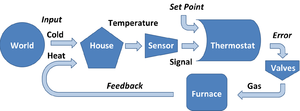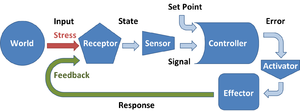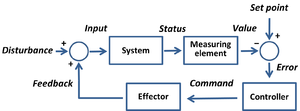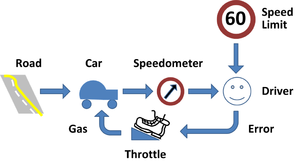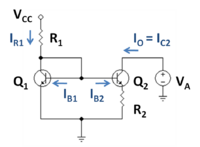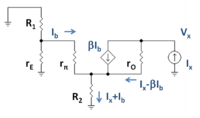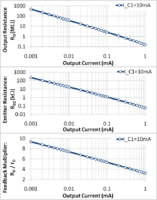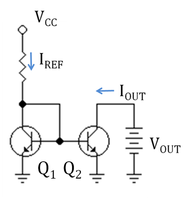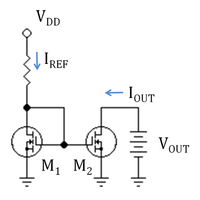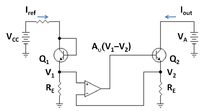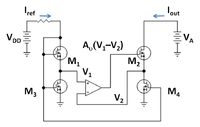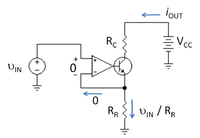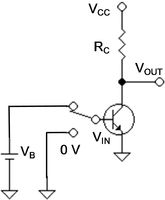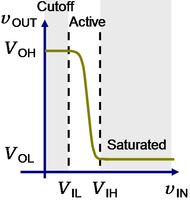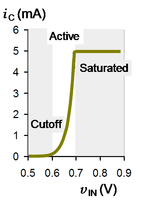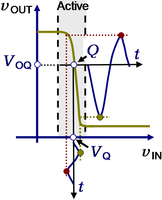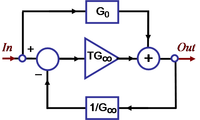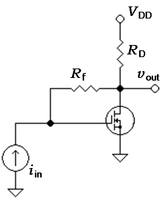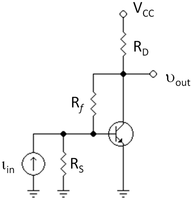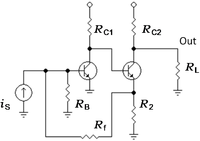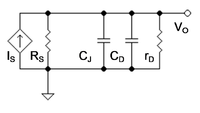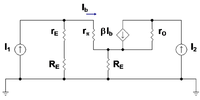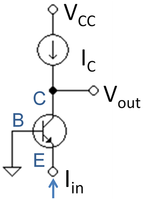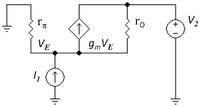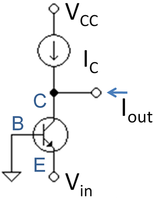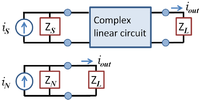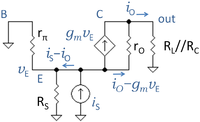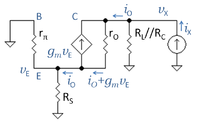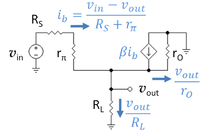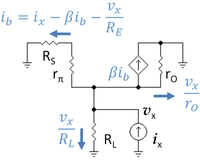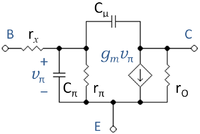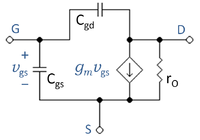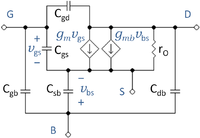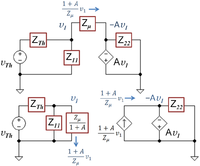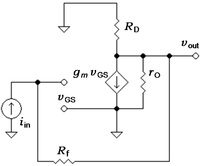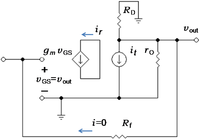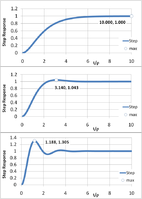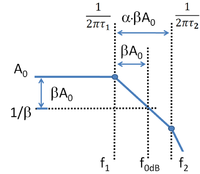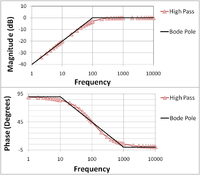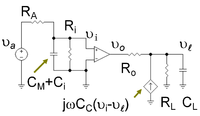imported>John R. Brews |
|
| (3 intermediate revisions by one other user not shown) |
| Line 1: |
Line 1: |
| | {{AccountNotLive}} |
| ==Circuits== | | ==Circuits== |
| {{TOC|right}} | | {{TOC|right}} |
| Line 7: |
Line 8: |
| |lines=5 | | |lines=5 |
| |Thermostat system.png|Thermostatic control of house temperature | | |Thermostat system.png|Thermostatic control of house temperature |
| }} | | |Homeostasis.png|Negative feedback as a model for homeostasis |
| | |Set-point control.png|Feedback control to set system status at a set point |
| | |Car feedback.png|Keeping a car at the speed limit using negative feedback |
| | }} |
|
| |
|
| ===Current sources=== | | ===Current sources=== |
Latest revision as of 03:07, 22 November 2023
The account of this former contributor was not re-activated after the server upgrade of March 2022.
Circuits
Miscellaneous
| Miscellaneous
|
|
|
(PD) Diagram: John R. Brews
|
Thermostatic control of house temperature
|
|
|
(PD) Diagram: John R. Brews
|
Negative feedback as a model for homeostasis
|
|
|
(PD) Diagram: John R. Brews
|
Feedback control to set system status at a set point
|
|
|
(PD) Diagram: John R. Brews
|
Keeping a car at the speed limit using negative feedback
|
|
Current sources
| Current sources
|
|
|
(CC) Image: John R. Brews
|
Widlar current source using bipolar transistors
|
|
|
(CC) Image: John R. Brews
|
Small-signal circuit for finding output resistance of the Widlar source
|
|
|
(CC) Image: John R. Brews
|
Design trade-off between output resistance and output current in Widlar source
|
|
|
(PD) Image: John R. Brews
|
A current mirror implemented with npn bipolar transistors using a resistor to set the reference current IREF; VCC = supply voltage.
|
|
|
(PD) Image: John R. Brews
|
An n-channel MOSFET current mirror with a resistor to set the reference current
|
|
|
(PD) Image: John R. Brews
|
Gain-boosted current mirror with op amp feedback to increase output resistance.
|
|
|
(PD) Image: John R. Brews
|
MOSFET version of wide-swing current mirror; M1 and M2 are in active mode
|
|
|
(PD) Image: John R. Brews
|
Operational-amplifier based current sink. Because the op amp is modeled as a nullor, op amp input variables are zero regardless of the values for its output variables.
|
|
|
(PD) Image: John R. Brews
|
A digital inverter circuit using a bipolar transistor.
|
|
|
(PD) Image: John R. Brews
|
Transfer characteristic of bipolar inverter showing modes.
|
|
|
|
|
Collector current vs. input voltage for a bipolar inverter with VCC=5V and RC=1kΩ.
|
|
|
(PD) Image: John R. Brews
|
Input and output signals for bipolar inverter used as an amplifier.
|
|
|
(PD) Image: John R. Brews
|
Two-port network with symbol definitions.
|
|
|
(PD) Image: John R. Brews
|
Z-equivalent two port showing independent variables I1 and I2.
|
|
|
(PD) Image: John R. Brews
|
Y-equivalent two port showing independent variables
|
|
|
(PD) Image: John R. Brews
|
H-equivalent two-port showing independent variables
|
|
|
(PD) Image: John R. Brews
|
G-equivalent two-port showing independent variables
|
|
|
(PD) Image: John R. Brews
|
Block diagram for asymptotic gain model
|
|
|
(PD) Image: John R. Brews
|
Possible signal-flow graph for the asymptotic gain model
|
|
|
(PD) Image: John R. Brews
|
MOSFET transresistance feedback amplifier.
|
|
|
(PD) Image: John R. Brews
|
Collector-to-base biased bipolar amplifier.
|
|
|
(PD) Image: John R. Brews
|
Two-transistor feedback amplifier; any source impedance RS is lumped in with the base resistor RB.
|
|
Small-signal circuits
| Small-signal circuits
|
|
|
(PD) Image: John R. Brews
|
Small-signal circuit for pn-diode driven by a current signal represented as a Norton source.
|
|
|
(PD) Image: John R. Brews
|
Bipolar current mirror with emitter resistors
|
|
|
(PD) Image: John R. Brews
|
Small-signal circuit for bipolar current mirror
|
|
|
(PD) Image: John R. Brews
|
Common base circuit with active load and current drive.
|
|
|
(PD) Image: John R. Brews
|
Common-base amplifier with AC current source I1 as signal input
|
|
|
(PD) Image: John R. Brews
|
Bipolar transistor with base grounded and signal applied to emitter.
|
|
|
(PD) Image: John R. Brews
|
Common-base amplifier with AC voltage source V1 as signal input
|
|
|
(PD) Image: John R. Brews
|
The result of applying Norton's theorem.
|
|
|
(PD) Image: John R. Brews
|
Bipolar current buffer.
|
|
|
(PD) Image: John R. Brews
|
Small-signal circuit to find output current.
|
|
|
(PD) Image: John R. Brews
|
Small-signal circuit with test current iX to find Norton resistance.
|
|
|
(PD) Image: John R. Brews
|
The result of applying Thévenin's theorem.
|
|
|
(PD) Image: John R. Brews
|
Bipolar buffer.
|
|
|
(PD) Image: John R, Brews
|
Small-signal circuit for voltage follower.
|
|
|
(PD) Image: John R. Brews
|
Determination of the small-signal output resistance.
|
|
|
(PD) Image: John R. Brews
|
Simplified, low-frequency hybrid-pi BJT model.
|
|
|
(PD) Image: John R. Brews
|
Bipolar hybrid-pi model with parasitic capacitances.
|
|
|
(PD) Image: John R. Brews
|
Simplified, low-frequency hybrid-pi BJT model.
|
|
|
(PD) Image: John R. Brews
|
Bipolar hybrid-pi model with parasitic capacitances.
|
|
|
(PD) Image: John R. Brews
|
Simplified, three-terminal MOSFET hybrid-pi model.
|
|
|
(PD) Image: John R. Brews
|
Four-terminal small-signal MOSFET circuit.
|
|
|
(PD) Image: John R. Brews
|
Miller effect: These two circuits are equivalent.
|
|
|
(PD) Image: John R. Brews
|
Small-signal circuit for transresistance amplifier
|
|
|
(PD) Image: John R. Brews
|
Small-signal circuit with return path broken and test current it driving amplifier at the break.
|
|
|
(PD) Image: John R. Brews
|
Three small-signal schematics used to discuss the asymptotic gain model
|
|
Return ratio
| Return ratio
|
|
|
(PD) Image: John R. Brews
|
Left - small-signal circuit corresponding to bipolar amplifier; Center - inserting independent source and marking leads to be cut; Right - cutting the dependent source free and short-circuiting broken leads.
|
|
Amplifiers
| Amplifiers
|
|
|
(PD) Image: John R. Brews
|
Some terms used to describe step response in time domain.
|
|
|
(PD) Image: John R. Brews
|
Ideal negative feedback model; open loop gain is AOL and feedback factor is β.
|
|
|
(PD) Image: John R. Brews
|
Conjugate pole locations for step response of two-pole feedback amplifier.
|
|
|
(PD) Image: John R. Brews
|
Step-response of a linear two-pole feedback amplifier.
|
|
|
(PD) Image: John R. Brews
|
Step response for three values of time constant ratio.
|
|
|
(PD) Image: John R. Brews
|
Bode gain plot to find phase margin of two-pole amplifier.
|
|
|
(PD) Image: John R. Brews
|
|
|
|
|
(PD) Image: John R. Brews
|
|
|
|
|
(PD) Image: John R. Brews
|
Bode magnitude plot for zero and for low-pass pole
|
|
|
(PD) Image: John R. Brews
|
Bode phase plot for zero and for low-pass pole
|
|
|
(PD) Image: John R. Brews
|
Bode magnitude plot for pole-zero combination; the location of the zero is ten times higher than in above figures
|
|
|
(PD) Image: John R. Brews
|
Bode phase plot for pole-zero combination; the location of the zero is ten times higher than in above figures
|
|
|
(PD) Image: John R. Brews
|
Gain of feedback amplifier AFB in dB and corresponding open-loop amplifier AOL.
|
|
|
(PD) Image: John R. Brews
|
Phase of feedback amplifier °AFB in degrees and corresponding open-loop amplifier °AOL.
|
|
|
(PD) Image: John R. Brews
|
Gain of feedback amplifier AFB in dB and corresponding open-loop amplifier AOL.
|
|
|
(PD) Image: John R. Brews
|
Phase of feedback amplifier AFB in degrees and corresponding open-loop amplifier AOL.
|
|
|
(PD) Image: John R. Brews
|
Operational amplifier with compensation capacitor CC between input and output to cause pole splitting.
|
|
|
(PD) Image: John R. Brews
|
Operational amplifier with compensation capacitor transformed using Miller's theorem to replace the compensation capacitor with a Miller capacitor at the input and a frequency-dependent current source at the output.
|
|
|
(PD) Image: John R. Brews
|
Idealized Bode plot for a two pole amplifier design.
|
|
|
(PD) Image: John R. Brews
|
Miller capacitance at low frequencies CM (top) and compensation capacitor CC (bottom) as a function of gain
|
|
